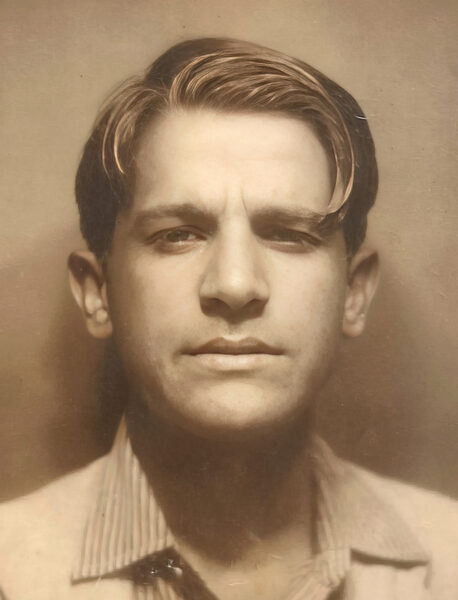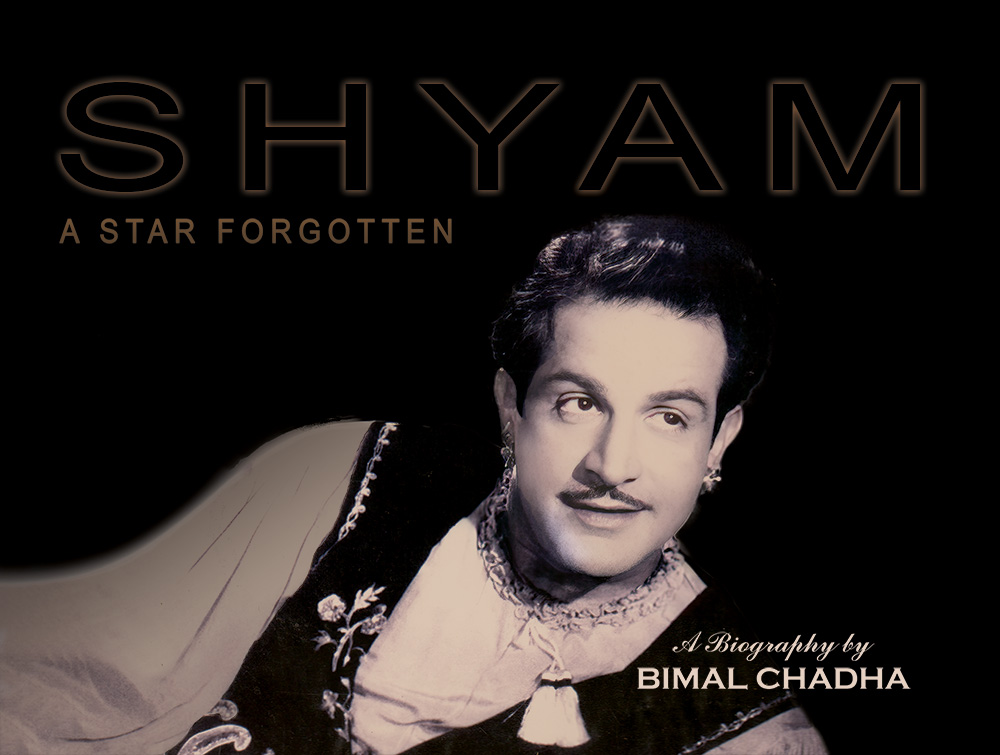Sunder Shyam Chadha, or Shyam as he was known on-screen, is regarded as one of the most good-looking leading men Hindi cinema has ever seen by old timers. Hindi cinema historians are certain that if not for his untimely death in 1951 at the age of 31, the face of Hindi cinema in the 1950s would have been very different. For at the time, Shyam was as big a star as the trimurti that would rule Hindi cinema in the ’50s – Dilip Kumar, Dev Anand and Raj Kapoor.
Shyam – A Star Forgotten is a biography of the star’s short yet exciting life, chronicled with much love by his nephew, Bimal Chadha. Sadly, Bimal passed away in 2022 before he could see this coffee table book published. Blue Pencil, a New Delhi-based publishing house with several publications under their belt, have come out with this book, thus fulfilling Bimal’s dream that goes decades back. The richly produced book, edited by Manek Premchand, contains some extremely rare photographs, not just of Shyam from his films or their posters, but also many unseen ones from his youth to his college days besides family photos. Following is an extract from the book, courtesy Blue Pencil.
After reaching Bombay, Shyam went over to Bombay Talkies for his screen test which we are told was quite satisfactory. The only thing that went against him was that Snehprabha Pradhan, the heroine already signed up for this picture was 5 feet and 1 inch tall, whereas Shyam was 6 feet in height. Incidentally, whenever anyone asked Shyam how tall he was, he would say 5 feet, 11 and a half inches. But some people knew he was 6 feet tall. When they asked him why he declared himself a bit shorter, he would explain that the words 6 feet are expressed in a second, whereas you take much more time in saying 5 feet 11 and a half inches. Perhaps Shyam already knew that speaking lines meant power.

As for that screen test, Shyam failed it. Or should we say, perhaps he passed the test but Bombay Talkies had to reject him for the role because of the difference in the height? After his initial disappointment with his first screen test,Shyam began to relax when he came to know the reason for his being rejected, and he was in no mood to rush back home. After running around in film circles, he found his way into the offices of filmmaker JK Nanda, who had a good standing in the industry in those days. Nanda took Shyam up as his Assistant Director and Assistant Dialogue/Script Writer on a fixed salary, which was quite reasonable as per the standard of those times. While Shyam was with JK Nanda, he got an offer to work as a hero a film at Calcutta, opposite the celebrated stage and film heroine of those days, Jahanara Kajjan.
Shyam reached Calcutta and commenced shooting. For the first time, he was facing the camera for a film. But destiny interfered with his hopes again. He was unable to adjust to the moods of the film’s director. Things got so bad so quickly, that he said bye-bye to this film. His self-respect (the Khukhrainism in him) could not bear it any longer. Imagine a young man like him, getting a break as a hero, and in his maiden outing saying goodbye to the director after just a few days’ shooting.
Shyam left Calcutta by train for Rawalpindi but got off at Lahore to meet some of his friends there. There he met some young people from the Urdu daily Pratap. (I think one of them was called Narinder). He started to stay with them. At Lahore, he went around meeting various people, and quite by good fortune got a role in a Punjabi film called Gowandhi. In this picture, a young lady named Veena was also being introduced as a heroine. The deal was through and Shyam completed his first film at Lahore without any problems.
Gowandhi, released in 1942 and in Punjab, did fairly well at the box office too.
The book could be ordered online from the Blue Pencil website or from Amazon India.
Header photo courtesy Blue Pencil.


